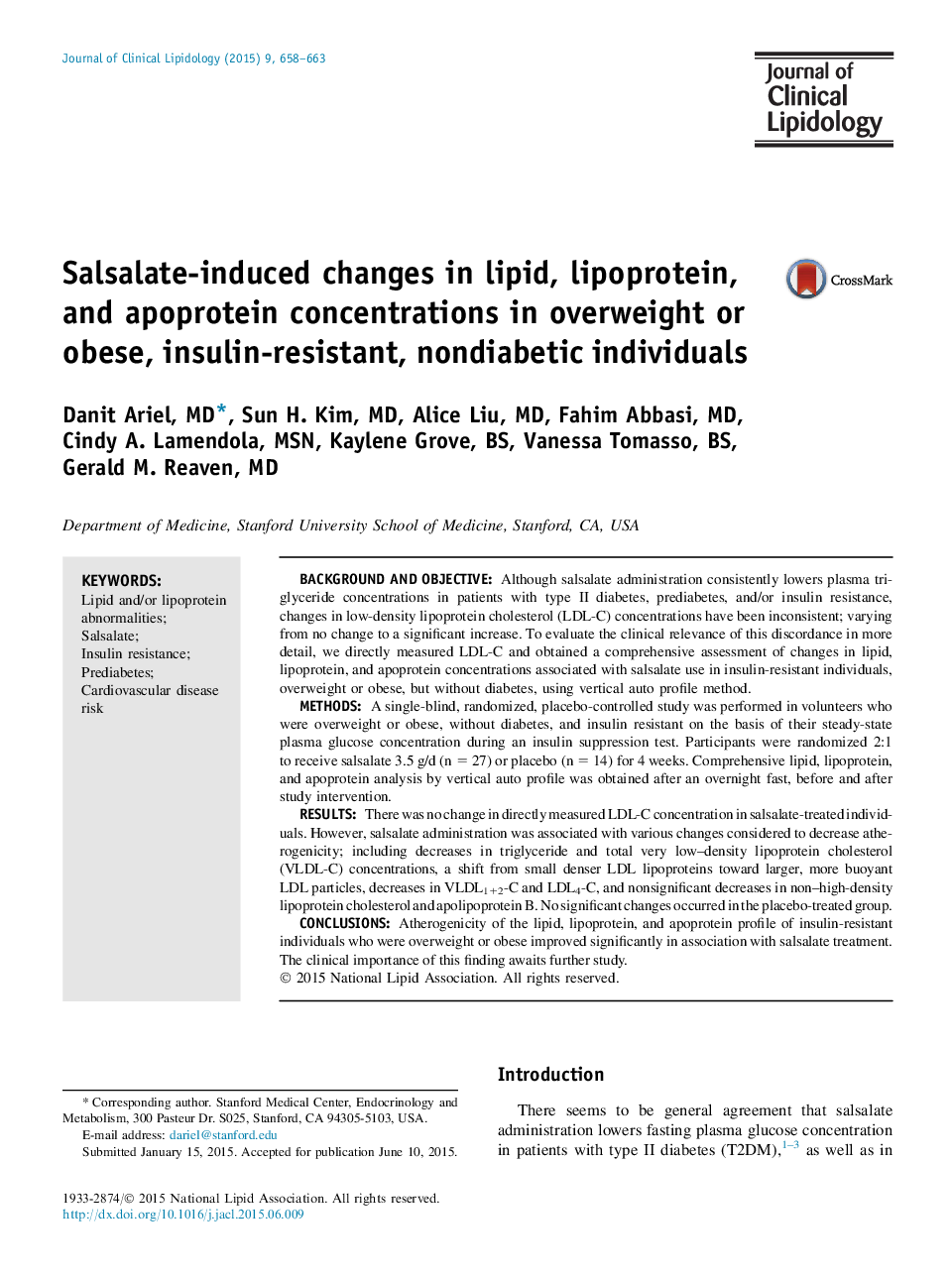| Article ID | Journal | Published Year | Pages | File Type |
|---|---|---|---|---|
| 2965873 | Journal of Clinical Lipidology | 2015 | 6 Pages |
•Population studied was overweight or obese, nondiabetic, insulin-resistant individuals.•Directly measured LDL-C concentration did not change in salsalate-treated subjects.•Salsalate was associated with changes considered to decrease atherogenicity.•Triglyceride and VLDL-C levels fell, along with a shift to larger, more buoyant LDL particles.
Background and ObjectiveAlthough salsalate administration consistently lowers plasma triglyceride concentrations in patients with type II diabetes, prediabetes, and/or insulin resistance, changes in low-density lipoprotein cholesterol (LDL-C) concentrations have been inconsistent; varying from no change to a significant increase. To evaluate the clinical relevance of this discordance in more detail, we directly measured LDL-C and obtained a comprehensive assessment of changes in lipid, lipoprotein, and apoprotein concentrations associated with salsalate use in insulin-resistant individuals, overweight or obese, but without diabetes, using vertical auto profile method.MethodsA single-blind, randomized, placebo-controlled study was performed in volunteers who were overweight or obese, without diabetes, and insulin resistant on the basis of their steady-state plasma glucose concentration during an insulin suppression test. Participants were randomized 2:1 to receive salsalate 3.5 g/d (n = 27) or placebo (n = 14) for 4 weeks. Comprehensive lipid, lipoprotein, and apoprotein analysis by vertical auto profile was obtained after an overnight fast, before and after study intervention.ResultsThere was no change in directly measured LDL-C concentration in salsalate-treated individuals. However, salsalate administration was associated with various changes considered to decrease atherogenicity; including decreases in triglyceride and total very low–density lipoprotein cholesterol (VLDL-C) concentrations, a shift from small denser LDL lipoproteins toward larger, more buoyant LDL particles, decreases in VLDL1+2-C and LDL4-C, and nonsignificant decreases in non–high-density lipoprotein cholesterol and apolipoprotein B. No significant changes occurred in the placebo-treated group.ConclusionsAtherogenicity of the lipid, lipoprotein, and apoprotein profile of insulin-resistant individuals who were overweight or obese improved significantly in association with salsalate treatment. The clinical importance of this finding awaits further study.
